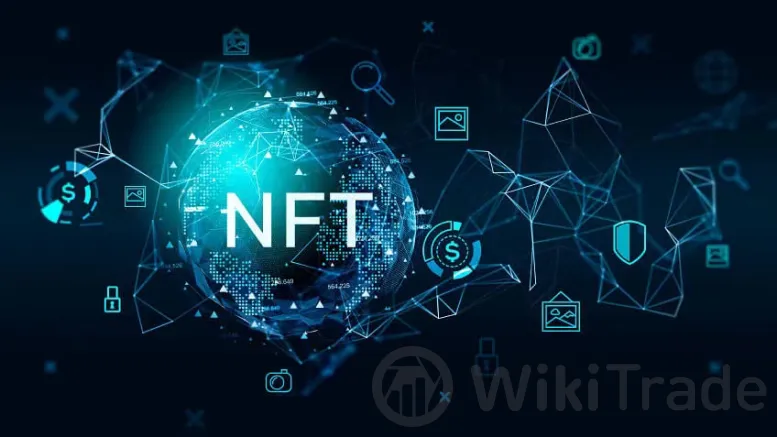Most valuable nft
Abstract: NFTs, or Non-Fungible Tokens, are revolutionizing the digital world. These unique digital assets, verified by blockchain technology, represent ownership of specific items or content. Unlike cryptocurrencies like Bitcoin, each NFT has a distinct digital signature, making them one-of-a-kind. This uniqueness has propelled NFTs to the forefront of digital art, music, collectibles, and even real estate, offering creators a new way to monetize their work.
Understanding NFT Valuation
The value of an NFT is determined by several factors:
- Provenance: The history of the NFT, including its creation and ownership, adds to its allure and value.
- Utility: Some NFTs offer benefits beyond ownership, like access to special events or rights within a digital ecosystem.
- Rarity: Scarcity increases an NFT's value, whether due to limited editions or unique traits within a collection.
- Market Demand: High demand for NFTs from popular artists or collections can significantly increase their price.
- Aesthetic Appeal: The artistic merit and visual appeal of a digital piece are also critical in its valuation.

The Role of Artist's Reputation and Digital Scarcity
Artists with a strong reputation, like Beeple, Pak, and Fewocious, tend to have higher-valued NFTs. Their established audiences and track records in the art world drive up the value of their digital creations. Digital scarcity, enabled by blockchain, ensures that the supply of any given NFT is controlled, enhancing its desirability among collectors and investors.

Selling NFTs: A Step-by-Step Guide
To sell an NFT, follow these steps:
- Creation: Create or acquire a digital asset you wish to tokenize.
- Minting: Upload your content to a blockchain network to mint it into an NFT.
- Listing: List your NFT on a marketplace, set a price, and decide on royalties for future sales.
- Marketing: Promote your NFT through social media, digital galleries, and other online platforms.
- Selling and Transferring: Once a buyer is found, the marketplace will handle the transaction, transferring ownership and funds.
- OpenSea: Offers a vast array of NFTs, including art, domain names, and virtual world items.
- Rarible: Allows artists to issue and sell NFTs, focusing on art.
- SuperRare: Concentrates on high-end, single-edition digital artworks.
- Metamask: A browser-integrated wallet to manage your assets.
- Nifty Gateway: Provides a platform to display and sell high-end NFTs.
- NonFungible.com: Offers analytics and market tracking to evaluate your NFTs' performance.
- Diversification: Spread investments across different types of NFTs.
- Research: Understand the artist's reputation and the rarity of the NFT.
- Timing: Market timing can significantly impact investment outcomes.
- Do thorough research.
- Use reputable platforms.
- Secure your wallet with a hardware wallet.
- Diversify your portfolio.

Recommended Platforms for Selling NFT Art

Tools and Services for NFT Portfolio Management
To effectively manage and display your NFT portfolio, consider using:

Economics Behind NFT Investments
The NFT market has seen record-breaking sales, such as Beeple's “Everydays: The First 5000 Days,” which sold for $69 million. These sales have sparked debates about valuation norms. While some view NFTs as a new frontier in art and investing, others question their high valuations' sustainability. Factors influencing sustainability include market sentiment, investor behavior, and blockchain technology's broader adoption.

NFT Investment Strategies
Investing in NFTs requires a strategic approach:

Exploring NFT Art and Collections
Influential NFT artists have pioneered the digital frontier, with Beeple's “Everyday: The First 5000 Days” selling for a staggering $69 million. NFT collections like CryptoPunks and Bored Ape Yacht Club offer more than just digital ownership—they provide entry into a community and access to exclusive benefits, adding layers to their intrinsic value.

Technical Aspects of NFTs
NFTs are built on blockchain technology, primarily Ethereum, ensuring authenticity and ownership through a decentralized ledger. Smart contracts automate transactions and enforce rules for each NFT, creating a self-sustaining ecosystem of creators and collectors.
Future Trends in the NFT Market
As technology evolves, so will NFTs. Future trends may include integration with virtual and augmented reality, creating more immersive experiences. New forms of digital art and social tokens are expected to emerge, expanding the boundaries of what NFTs can represent.
Potential Regulatory Developments
The NFT market currently operates in a relatively unregulated space. However, as it grows, regulations concerning copyright, taxation, and securities law may be implemented, significantly impacting the market.
FAQs
What Determines the Price of an NFT?
The price of an NFT is influenced by its rarity, the artist's reputation, provenance, and utility. Market demand and sentiment also play crucial roles.
How to Identify a Valuable NFT?
Look at the artist's track record, scarcity and unique traits, community and ecosystem, and past sales and market trends.
Best Practices for Securing an NFT Investment
The NFT market is volatile, with liquidity issues and regulatory uncertainty posing risks. Owning an NFT does not necessarily grant ownership of the underlying intellectual property, which can lead to potential disputes.




Top News
 WikiTrade
WikiTrade WikiTrade
WikiTrade WikiTrade
WikiTrade WikiTrade
WikiTrade WikiTrade
WikiTrade WikiTrade
WikiTrade WikiTrade
WikiTrade WikiTrade
WikiTrade WikiTrade
WikiTrade WikiTrade
WikiTrade


